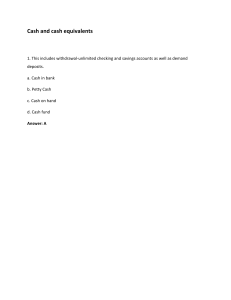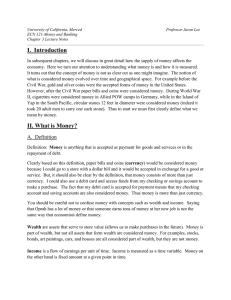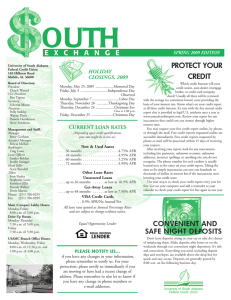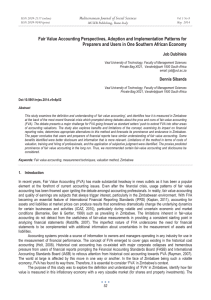Phase 1 Exam Review
advertisement
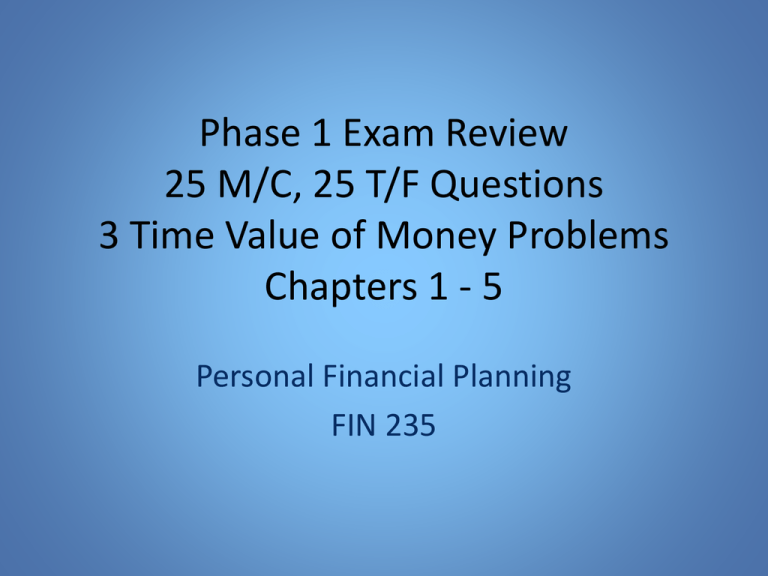
Phase 1 Exam Review 25 M/C, 25 T/F Questions 3 Time Value of Money Problems Chapters 1 - 5 Personal Financial Planning FIN 235 Chapter 1 Personal Financial Planning in Action • Keys to Personal Financial Success – Objectives: • Financial & Career Planning • Tax Planning • Risk Management – Importance of spending less than you earn – Effects of Inflation (CPI measure), GDP • Time Value of Money Problems (4 Extra Credit) Chapter 2 Career Planning • Importance of Career Planning – Links to life time income potential – Identifying Career opportunities – Importance of resume and cover letters • Key phrases – targeting cover letter – Managing credit profile – Continuing Education Chapter 3 Financial Statements, Budgets • Importance of Goals and Personal Values – Setting Financial Goals (being specific) • Spending • Capital Accumulation • Risk Management – Personal Balance Sheet • Assets • Liabilities • Net Worth = Assets - Liabilities – Cash Flow Statement • Income • Expenses – Fixed – Variable – Disposable Income vs. Discretionary Income Chapter 4 Managing Income Taxes • Tax Terminology – Progressive – Regressive – Marginal Rates vs. Average Rate – Treatment of Short-Term vs. Long-term Gains – Managing Tax Burden • Deductible expenses: itemizing vs. Standard Deduction – Use-it or Loose-It accounts – Tax Forms: 1040EZ, 1040A, 1040, 1040X Chapter 5 Managing Checking & Savings • Importance of Liquidity • Mutual S&Ls, Credit Unions • Meeting Daily Money Needs – – – – Debit cards: immediate deductions from checking account Credit cards: deferred payments Demand deposit (Checking, NOW) Time deposits (CD’s) • Monetary Assets • Liability limits for lost credit cards – $50 <= 2 days, $500 <= 60 days • FDIC Insurance limits ($250K) Time Value of Money • Future value of an amount saved – FV = Amount x (1 + i)n • Present value of an amount to be received – PV = Amount ÷ (1 + i)n • Future value of a series of equal deposits – FVA = Deposit x FVIFA (future value interest factor for an annuity) – FVIFA = [ (1 + i)n – 1] ÷ I • i = Annual rate ÷ number of compound periods per year • n = Number of years x number of compound periods per year
